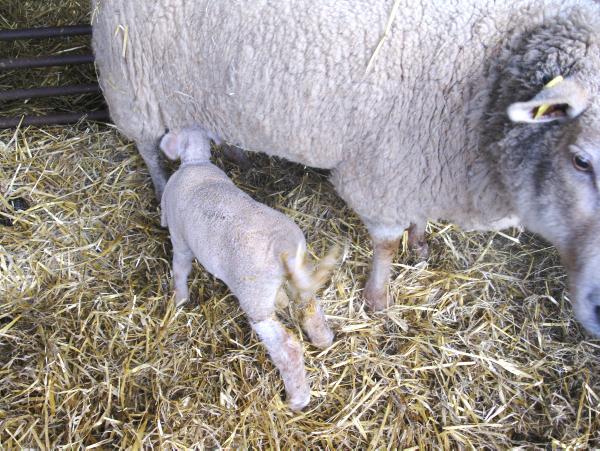I don’t know why the lamb died. I just found the ewe fussing over a fully formed lifeless lamb that didn’t show signs of a difficult lambing.
I immediately took out my penknife, removed the skin from the dead lamb, and placed it on a triplet taken from another ewe. Right from the off the mother of the dead lamb took to the fostered triplet in her own lamb’s skin as it was her own.
I timed myself skinning the lamb as it’s not a nice job. Starting with cutting a ring in the skin around the neck, plus rings around each front leg, opening the skin off the chest and then peeling body skin right back to the tail, the job took five minutes.
There’s a lot of work when lambing indoors but hopefully each lamb reared from February will come into in excess of €100.
Tagging sheep can be a pain but now that they are tagged, I keep a record of each lambing by tag number, date, number of lambs, and spray number on mother and lamb(s). It’s interesting to see the same ewes repeatably having triplets over the years while others tending to have repeat single lambs. One way to increase your lamb crop would be to sell off all two-year-old ewes that only give you single lambs.
There are a few tricks to remove some of the slog from lambing. In the few minutes after birth the lamb’s suckling reflex is already strong. If you put the ewe on her backside and bring the lamb(s) to the teat it will get that vital first taste of beestings.
Sometimes if the ewe is slow to lick her lamb(s) throwing a little coarse ration on the lamb encourages the ewe to lick and dry off her offspring.
Often if I think that a ewe is in pain after a hard lambing, I give her a few Disprins dissolved in water. It’s not expensive and seems to relax the ewe.
Sometimes there are jobs that you can skip. I remember reading where a survey of UK flocks found that the incidence of Joint Ill or Navel Ill was actually higher in flocks that were treating lambs navels at birth, than it was in the flocks doing no navel treatment.
I only navel dip lambs that I think have been exposed to dirty bedding. Lambs that are born on a dry straw bed are not treated.
Really Joint Ill can be a mystery disease. Over the years I have seen the best managed flocks (including Teagasc flocks) being overwhelmed with Joint Ill. In such cases the shepherds were forced into giving a preventative injection of antibiotic to every lamb at birth.
Every time I handle young lambs I like to check the navels for any sign of swelling. If you treat the condition early the chance of success is higher.





SHARING OPTIONS